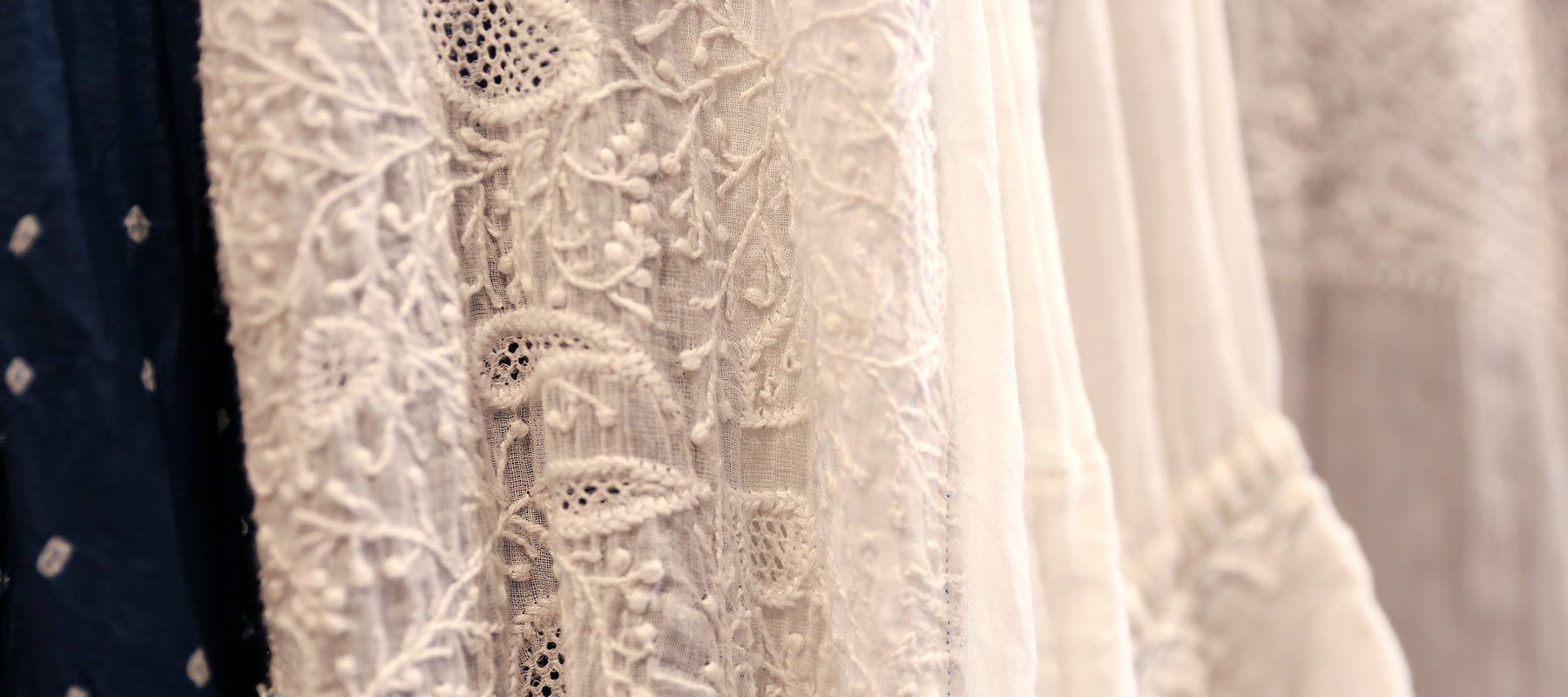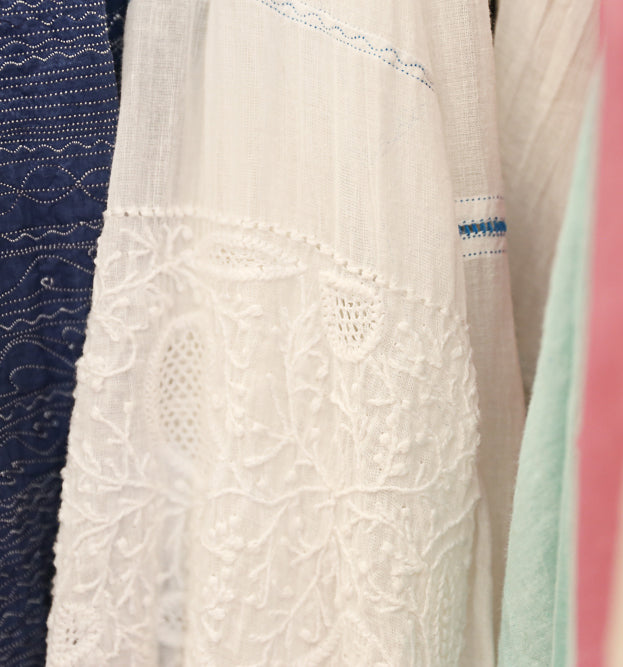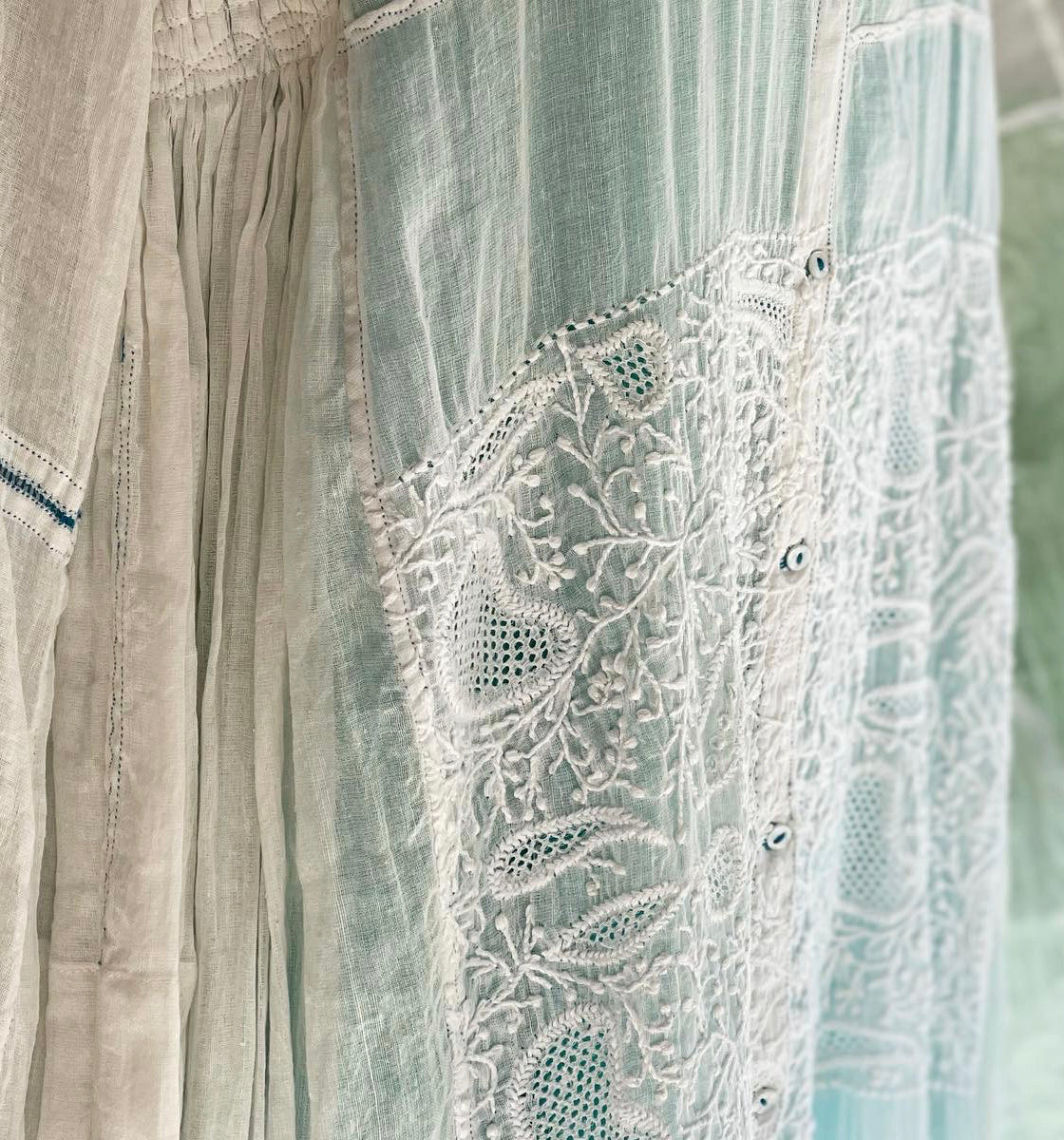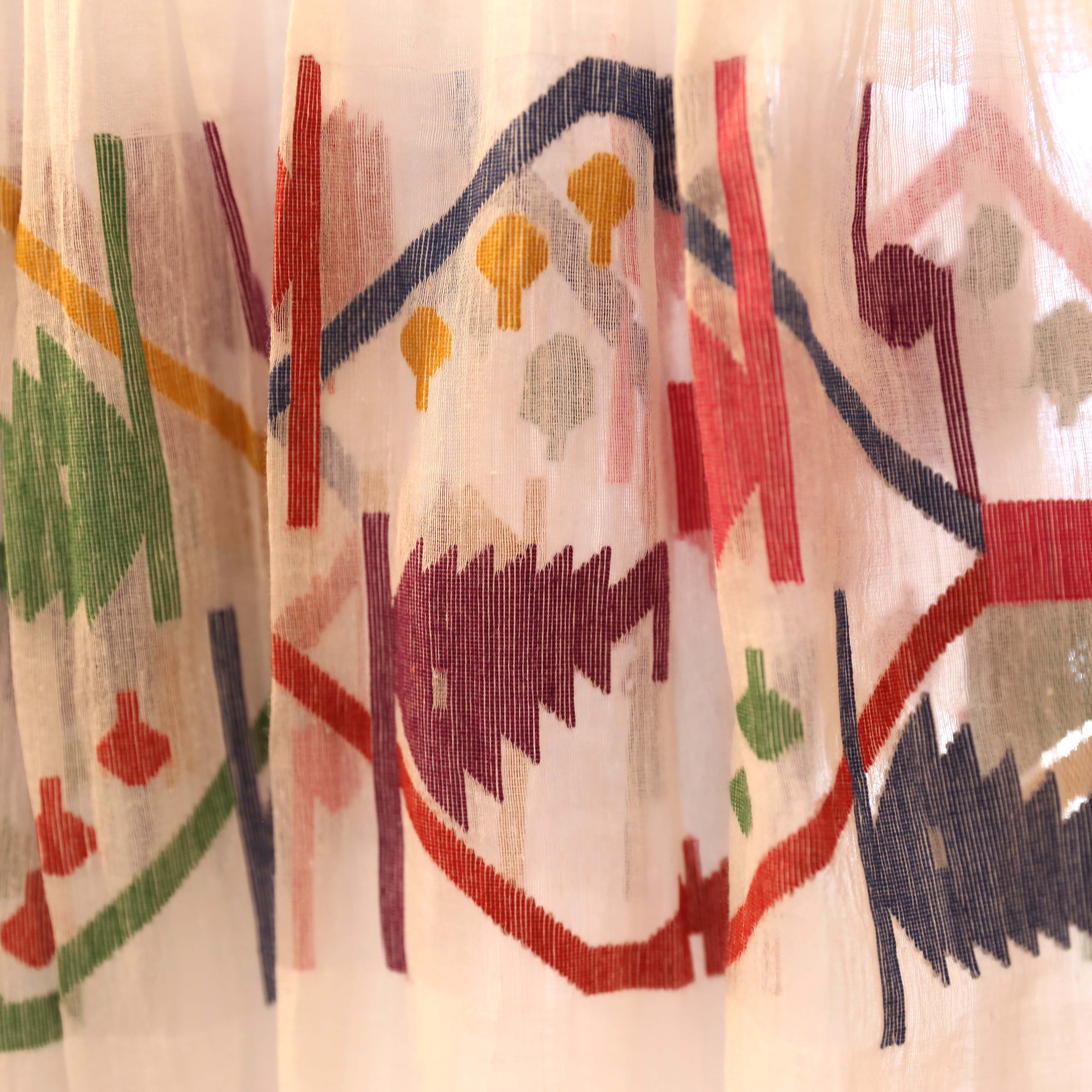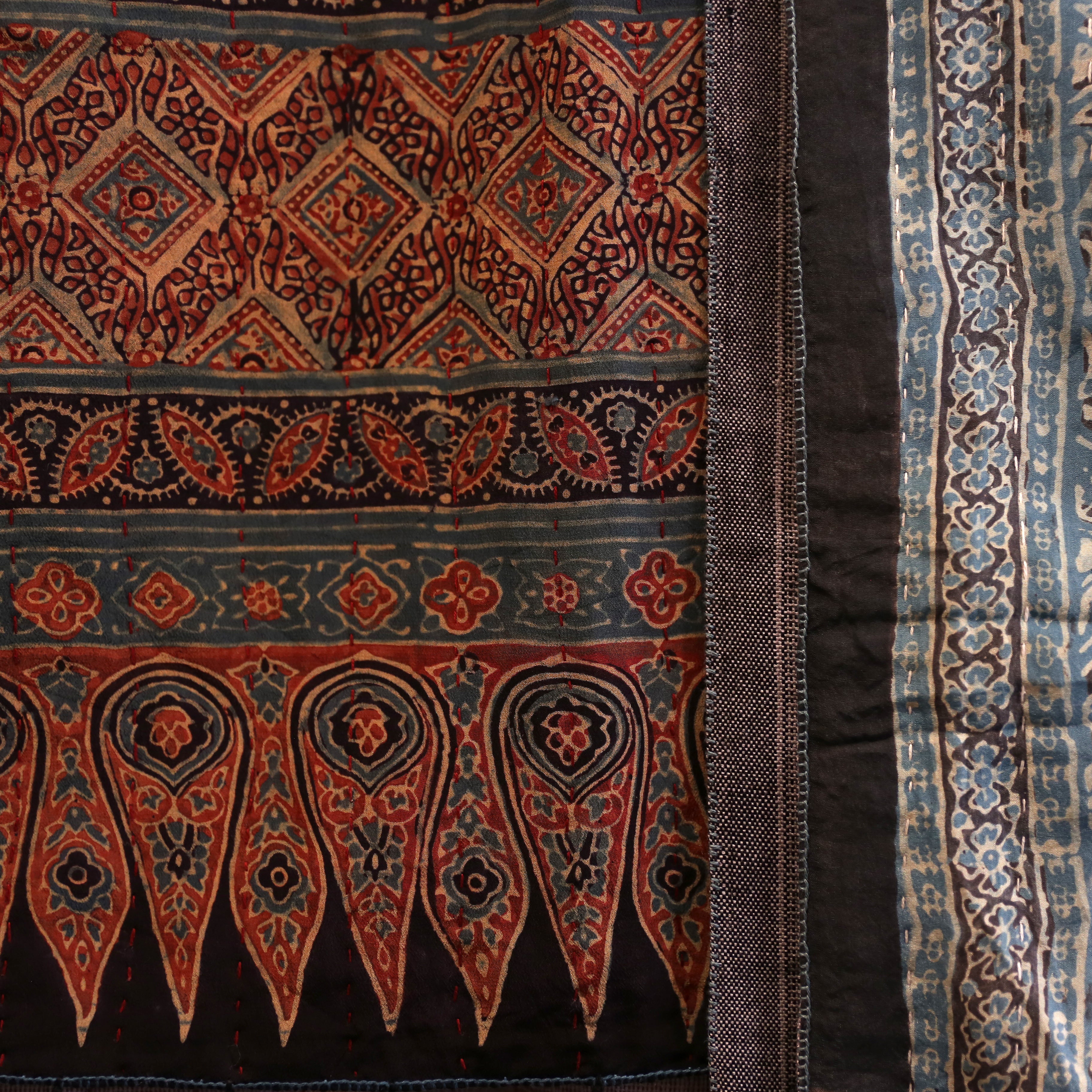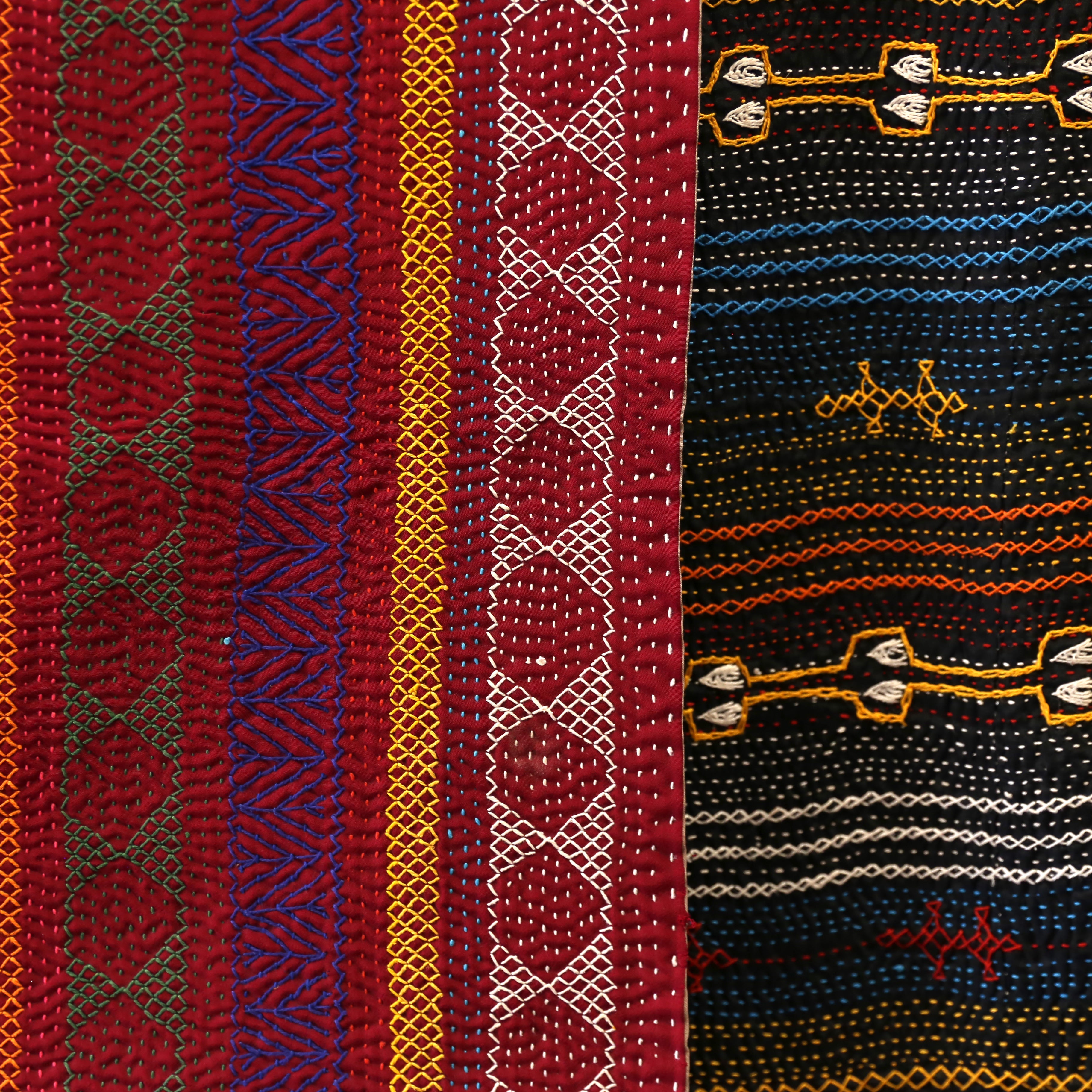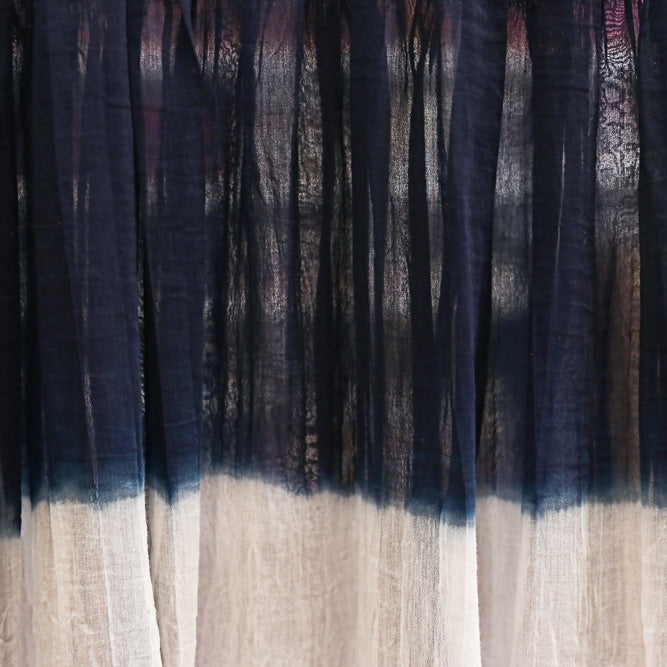Stitched ⋮ Chikankari
Chikankari is delicate white hand embroidery on white cotton, produced mainly in Lucknow.
Today, some of the most sophisticated chikankari is to be found on garments and saris designed by top Indian designers - including Chinar Farooqui of INJIRI - informed by craft preservation initiatives, and placing fine craftsmanship at the heart of their practice. Their work, inspired by the opulence of India’s courtly cultures, offers an elegant aesthetic favoured by Indian high society and celebrities.
The appeal for chikankari is wide ranging and international, with the intricacy and beauty of the fine needlework requiring time, skill and patience.
The challenges facing hand made textile production are complex, and continue to be so. The decline and reinvention of chikankari is a trajectory that is common to many textile crafts.
High quality work is distinguished by extremely fine and even stitches, the variety of which, when combined with the delicate floral designs, trailing stems and fine trellis patterns, creates the impression of lightness and sophistication. There are myths surrounding its origins, and surviving examples are traced to nineteenth century Bengal , where it appealed to European tastes, and to Lucknow, where it was favoured by the ruling nawabs and their courts. The challenges facing hand made textile production are complex, and continue to be so.
The decline of courtly patronage in the late nineteenth century, followed later by post-Partition migration of wealthy patrons out of Lucknow, led to a decline in demand and a consequent deterioration n the quality of the embroidery. Increased commercialisation in the 1960’s saw the demand for rougher, less precise work increase, and the demand for fine work, traditionally done by men, decline.
Men left the industry, because of the fall in prestige and wages; women replaced them, but with less developed skills. Today, the vast majority of chikankari consists of thick rough stitches - ubiquitous in the shops of Lucknow, and readily available in most major Indian cities. It has, for connoisseurs, lost its authenticity.
Superior chikankari, consisting of more intricate stitches, owes its revitalisation and raised public profile to the input of designers in the 1980’s.

